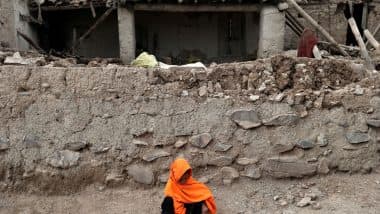Kabul [Afghanistan], May 3 (ANI): An earthquake of magnitude 4.3 rocked Afghanistan on Saturday, a statement by the National Centre for Seismology (NCS) said.
As per the NCS, the earthquake occurred at a shallow depth of 15 km, making it susceptible to aftershocks.
In a post on X, the NCS said, "EQ of M: 4.3, On: 03/05/2025 13:20:36 IST, Lat: 36.52 N, Long: 71.20 E, Depth: 15 Km, Location: Afghanistan."
https://x.com/NCS_Earthquake/status/1918576508303548527
Shallow earthquakes are more dangerous than deeper ones due to their greater energy release closer to the Earth's surface, causing stronger ground shaking and increased damage to structures and casualties, compared to deeper earthquakes, which lose energy as they travel to the surface.
On Friday, an earthquake of magnitude 4.5 on the Richter Scale jolted Afghanistan, a statement by the National Centre for Seismology (NCS) said.
As per the NCS, the earthquake occurred at a depth of 150km.
In a post on X, NCS said, "EQ of M: 4.5, On: 02/05/2025 20:20:58 IST, Lat: 35.00 N, Long: 68.27 E, Depth: 150 Km, Location: Afghanistan."
https://x.com/NCS_Earthquake/status/1918319773504639167
As per the United Nations Office for the Coordination of Humanitarian Affairs (UNOCHA), Afghanistan remains highly vulnerable to natural disasters, including seasonal flooding, landslides and earthquakes.
These frequent earthquakes in Afghanistan cause damage to vulnerable communities, which are already grappling with decades of conflict and under-development and have left them with little resilience to cope with multiple simultaneous shocks, UNOCHA noted.
Afghanistan has a history of powerful earthquakes, and the Hindu Kush Mountain range is a geologically active area where quakes occur every year, according to the Red Cross.
Afghanistan sits on numerous fault lines between the Indian and the Eurasian tectonic plates, with a fault line also running directly through Herat. Its location on several active fault lines along the collision zone between the Indian and Eurasian tectonic plates makes it a seismically active region. These plates meet and collide, causing frequent seismic activity. (ANI)
(This is an unedited and auto-generated story from Syndicated News feed, LatestLY Staff may not have modified or edited the content body)













 Quickly
Quickly













